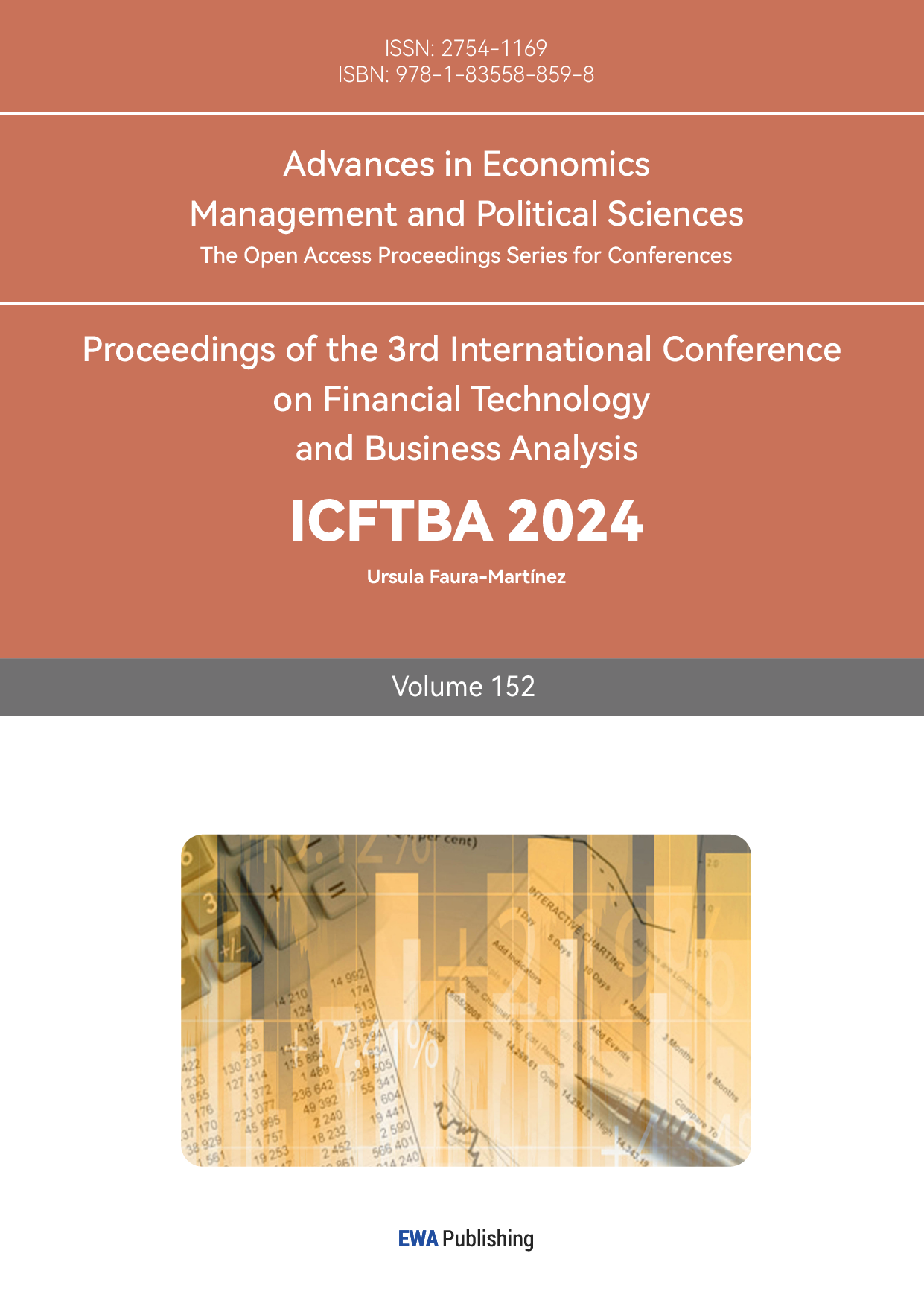1. Introduction
The advantages of globally recognized brands have been increasingly apparent in recent years. A growing number of businesses are starting to establish a global brand and see the entire world as their market. But this will increase competition in the already crowded sector. As a result, an increasing number of global firms have turned their attention to marketing in an effort to meet their objectives of preserving their market share, keeping the current customer base, and boosting profitability.
Founded in 1892, the Coca-Cola Company is a multinational corporation based in the United States that holds a significant market position in the beverage sector. It produces, sells and markets alcoholic beverages, syrups and concentrates for other non-alcoholic beverages, and soft drinks like Coca-Cola. The New York Stock Exchange (NYSE) is where its stock is listed. The Coca-Cola Company is best known for its flagship brand, Coca-Cola. Operating across Europe, the Middle East, Africa, Latin America, North America, and Asia Pacific, this is a global brand. Therefore, this article explores the unique marketing strategies used by this worldwide brand and their effects.
This research employs a variety of data sources, including academic journals, media stories, Coca-Cola's quarterly financial reports, and big data, to analyze the company's marketing strategy. It also performs an effect analysis on particular marketing initiatives. This study integrates quantitative and qualitative analysis techniques to examine the influence and consequences of marketing initiatives. Among these, this study employs a significant quantity of data for quantitative analysis, including Coca-Cola's stock price, earnings, unit case volume, organic revenue, and sale performance. By observing how these data fluctuate over time, the study infers the effects of marketing initiatives. Academic publications are consulted in qualitative analysis along with media article material to examine the impact of marketing.
The majority of the research papers that are now available on Coca-Cola's marketing strategy concentrate on the company's SWOT, PEST, STP, marketing mix, and international marketing analyses. Nevertheless, there aren't many studies that concentrate on the marketing strategies employed by Coca-Cola, such as co-branding, sensory marketing, and localization strategy. But these strategies are crucial to Coca-Cola's marketing campaign's success. To close the gap in the body of research, this article mainly examines the three distinctive marketing strategies mentioned above that Coca-Cola employs in conjunction with examples of particular marketing initiatives.
2. Sensory Marketing
Using the senses of taste, touch, smell, hearing, and sight to communicate with customers is known as sensory marketing [1]. Coca-Cola's marketing strategy heavily emphasizes sensory marketing. This paper examines how Coca-Cola can use sensory marketing to raise brand awareness and even profitability.
2.1. Logo
From visual standpoints, good logos are essential for creating brand awareness and brand equity [2]. In the case of Coca-Cola’s logo, it consists of white Coca-Cola text in artistic font with a red spherical background and a white stripe. Red occupies the majority of the logo, which is highly eye-catching. More than 130 years ago, Coca-Cola was supplied in barrels, and alcohol was also supplied. But in order to make a difference between them and there were no problems at customs, barrels of Coca-Cola began to turn red. The red color has already become a tradition and an association with Coca-Cola. Hence it came about that the logo is red.
Despite not intentionally designing its logo in red for marketing, Coca-Cola inadvertently had a positive outcome. According to research, red was frequently selected as the color to elicit happiness [3]. Red, on the other hand, is more memorable than hues like purple, blue, and green [4]. As a result, the color red serves to both visually improve the mood of the customers and successfully draw their attention while strengthening their memories of Coca-Cola.
2.2. The Contour Bottle
The classic Coca-Cola contour bottle is included in the graphic advertising as well. The distinctive contour fluted lines of the Coca-Cola bottle are among the most well-known shapes in the world. Renowned industrial designer Raymond Loewy called it the "perfect liquid wrapper".
Despite not having been intended for commercial use, the contour bottle's design has had a positive marketing impact. Coca-Cola's enormous success in the 1920s encouraged rivals to follow suit. Coca-Cola's name and emblem were slightly altered before being placed on the bottles. Coca-Cola created the contour bottle as a response to these infringements in order to safeguard its brand and bottlers.
According to a 1949 research, over 99% of Americans could recognize a Coke bottle just by its shape. Coca-Cola's contour bottle was ultimately successful in registering as a trademark thanks to this survey result, making it the second packaging design in history to have this distinction [5]. As a result, customers have developed strong visual impressions of this distinctive and recognizable bottle form, which eventually comes to symbolize Coca-Cola itself.
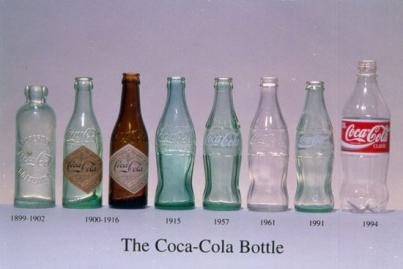
Figure 1: The history of the Coca-Cola Contour Bottle [6]
2.3. Music in Television Advertisement
From auditory perspectives, it has been discovered that music that is omnipresent in television advertisements tends to enhance ad persuasion by influencing the audience’s sentiment and participation [7].
In the example of Coca Cola’s television commercial “I’d like to buy the world a Coke”, launched in July 1971, individuals of different racial and cultural origins gathered on a hilltop to share Coca-Cola as a sign of unity and goodwill.
Upbeat melody, straightforward but sincere lyrics, and a simple, repeated tempo are all present in the song "I'd like to buy the world a Coke." The melody of this song created a warm and bright atmosphere for the audience to listen to, and the lyrics also helped to express people's desire for love and peace during that time, especially against the backdrop of the increasingly turbulent times under the civil rights movement, anti-war protests, and other activities. Simultaneously, the music's repeating beat encouraged increased vigor. As a result, the song unavoidably struck a chord with the crowd. According to the Coca-Cola Company, radio stations all around the nation were inundated with requests for the song, and Coca-Cola got more than 100,000 letters complimenting the advertisement.
Coca-Cola's "I'd Like to Buy the World a Coke" campaign is legendary in the marketing and advertising industry, partly because of its use of the music. Various quantitative metrics of Coca-Cola show its effects. The Coca-Cola Company's stock price climbed by roughly 1.5 times from $0.1932 on December 31, 1970, to $0.2825 on December 31, 1971. Additionally, the Coca-Cola Company also had record second-quarter earnings in 1971, coming in at $48,660,439, or 82 cents per share, up 14% from $42,453, 263, or 72 cents per share, the year before.
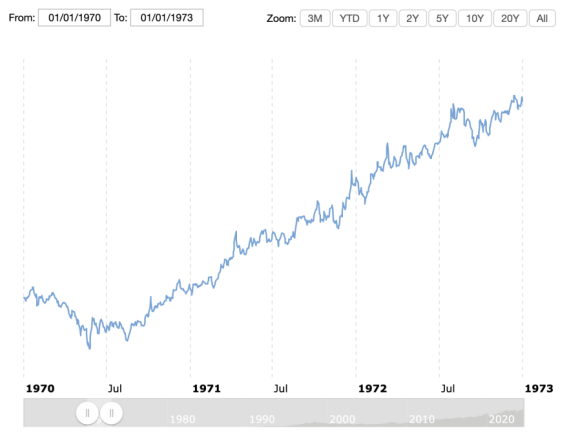
Figure 2: The stock price record of Coca-Cola Company from Jan.1st 1970 to Jan.1st 1973 [8]
3. Localization
Multinational companies need to use localization strategies to adjust to local culture in order to compete in the local market. Global businesses localize their brands by adding regional components in an effort to draw in customers using a variety of tactics. As a global brand, Coca-Cola also adopts localization strategies in designing its regional products and marketing campaigns.
Coca-Cola introduced a limited-edition can packaging product for the Year of the Rabbit for the 2023 Spring Festival. The Chinese zodiac rabbit and traditional auspicious motifs serve as inspiration for the product design, which results in a modern yet festive visual impression. Coca-Cola's incorporation of traditional Chinese culture into its goods not only satisfies consumer demand for items during particular holidays, but also conveys the festive atmosphere through its unique packaging design.
In the network, for the Year of the Rabbit, Coca-Cola created an animated short video online with the theme "Time is changing, but the beauty of reunion remains unchanged", which tells the tale of discovering deep ties between individuals over dinner. The story's central plot perfectly captures the Chinese people's intense desire for a reunion. Coca-Cola similarly gave the movie a more Chinese feel by adding Chinese components like dumplings and Spring Festival couplets.
Coca-Cola achieved exceptional market performance in the first quarter thanks to their excellent marketing efforts during the Spring Festival of the Year of the Rabbit. As per the financial report of Coca-Cola for the first quarter, the 10% year-on-year growth in unit case volume in the Asia-Pacific market and the 3% growth in organic revenue were mostly driven by the expansion of the Chinese market. In the case of carbonated drinks specifically, the Asia-Pacific market, which includes China, effectively led the worldwide growth of carbonated drinks (including the flagship Coca-Cola brand) by 3%. Out of these, the flagship brand Coca-Cola saw 3% global growth, while sugar-free Coca-Cola saw 8% global growth. From the aforementioned facts, it can be roughly deduced that the localized marketing of the Coca-Cola brand during the Year of the Rabbit's Spring Festival contributed to the growth of the Chinese market, which in turn drove the rise of worldwide sales. This demonstrates how well Coca-Cola's localized marketing plan worked during the Spring Festival.
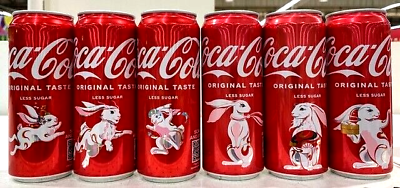
Figure 3: Coca-Cola Year of the Rabbit Limited Edition Can [9]
The following year, Coca-Cola once again made significant investments in the Chinese New Year to capitalize on significant holidays like the Spring Festival and regain the growth momentum of carbonated beverages in an effort to maintain the outstanding market performance during the 2023 Year of the Rabbit Spring Festival.
In 2024, Coca-Cola chose young paper-cutting artist Chen Fenwan to collaborate with, a choice that shows Coca-Cola's desire to integrate traditional Chinese paper-cutting art into its product packaging. Similarly, Coca-Cola chose the symbol of the 2024 Chinese zodiac - the dragon. Incorporating the traditional Chinese zodiac culture once again shows Coca-Cola's understanding of Chinese local culture and its marketing methods for localized products.
Simultaneously, Coca-Cola and director Zhang Dapeng collaborated together to create the Chinese New Year hit film "The Dragon Dance Feast" for promotion. The video also features the dragon dance and New Year's Eve dinner, colorful cultural symbols of China. The integration of Chinese culture is more likely to resonate with Chinese consumers, thus achieving its marketing goals.
Despite the fact that Coca-Cola's first-quarter 2024 financial report indicates a decline in sales volume in China, the company's chairman and CEO, James Quincey, stated during an earnings call that the company concentrated on carbonated beverages for this year's Spring Festival and that the outcomes were satisfactory. This demonstrates that Coca-Cola's localized marketing strategy during the Spring Festival has produced some desired outcomes.
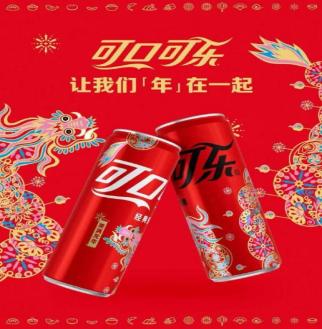
Figure 4: Coca-Cola 2024 year of dragon limited edition cans [10]
4. Co-branding
A marketing strategy known as co-branding involves using several brand identities on a single good or service. Co-branding is a win-win strategy for collaborative brands to accomplish their objectives, resulting in the increasing popularity of using co-branding as a marketing tactic. For well-established brands, it presents a chance to generate a completely new revenue stream or increase sales of current items. This is the reason why Coca-Cola has demonstrated a strong interest in co-branding for these years.
In 2023, Coca-Cola and the well-known game corporation Riot Games collaborated to create Coca-Cola Ultimate Zero Sugar. This co-branded product of Coca-Cola and League of Legends was introduced on the Coke Creations platform, which was introduced the previous year and focuses on experimental flavors catered to various enthusiast groups [11]. According to Peter Adams, the limited edition drink is designed to taste like experience points, or "+XP," which are used to advance in the game. The League of Legends title is shown plainly on the Coca-Cola Ultra Zero Sugar container, which also features gold and black hues. Additionally, the packaging design blends aspects of the two well-known brands while drawing inspiration from League of Legends mythology. Examples of this include a custom "Ultimate" crest with a blue Hextech backlit glow and a Spencerian script that was inspired by the Nexus crystals in "Runeterra" [12].
Through innovative products, updated designs, and consumer-centric marketing, Coca-Cola and League of Legends collaborate to help Coca-Cola draw in League of Legends players and revitalize the iconic brand. This helps Coca-Cola grow its customer base and brand awareness.
5. Conclusion
This paper examines the functions and outcomes of the marketing strategies employed by Coca-Cola, including co-branding, localized marketing, and sensory marketing, in conjunction with some examples of promotional activities. In sensory marketing, the Coca-Cola brand logo, bottle design, and music in TV commercials are highlighted. This illustrates how Coca-Cola appeals to viewers' visual and auditory senses to improve their perception of the brand, raise brand awareness, and boost profitability (stock price and earnings). This article examines Coca-Cola's localized marketing strategy with an emphasis on the Chinese market. Using the Spring Festivals of 2023 and 2024 as examples, it demonstrates how Coca-Cola blends into Chinese culture to appeal to Chinese customers and boost sales (unit case volume and organic revenue). Finally, this paper analyzes the co-branding marketing adopted by Coca-Cola and uses its cooperation with League of Legends as an example to show the positive impact of this strategy on its brand.
However, this article's analysis of marketing tactics' effects does not always provide concrete evidence for the strong relationship that exists in some situations between increased profitability and marketing initiatives. In these situations, we can gather data from several angles to strengthen our argument. Furthermore, this article only examined one or two particular marketing actions for examination out of every marketing plan. However, it is impossible to thoroughly assess and compile the results of Coca-Cola's marketing strategies due to the inconsistent impact of various marketing operations in various countries. To tackle this issue, future research can identify comparable marketing initiatives across various geographies for examination, and ultimately people can comprehensively enumerate the impact and function of these kinds of initiatives. Future research can keep concentrating on the use of sensory marketing and localization strategy in global brands. To make inferences, researchers can also analyze global brands' comparable marketing campaigns across national borders in detail.
References
[1]. Tek, Ömer Baybars, Engin, Özgül, (2008). Modern Pazarlama İlkeleriUygulamalı Yönetimsel Yaklaşım (3. Basım). İzmir: Birleşik Matbaacılık Ltd.
[2]. Van Grinsven, Bo, and Enny Das. Logo design in marketing communications: Brand logo complexity moderates exposure effects on brand recognition and brand attitude. Journal of marketing communications, 22.3 (2016): 256-270.
[3]. Jonauskaite, Domicele, et al. What color do you feel? Color choices are driven by mood. Color Research & Application, 44.2 (2019): 272-284.
[4]. Isola, Phillip, et al. What makes a photograph memorable? IEEE transactions on pattern analysis and machine intelligence, 36.7 (2013): 1469-1482.
[5]. Krishna, Aradhna, Luca Cian, and Tatiana Sokolova. The power of sensory marketing in advertising. Current Opinion in Psychology, 10 (2016): 142-147.
[6]. First name Last name. The Evolution of the Coca-Cola Contour Bottle. DIELINE, November 17, 2009, https://thedieline.com/the-evolution-of-the-coca-cola-contour-bottle-html/.
[7]. Camankulova, Regina, and Niyazi Ayhan. Localization Strategy of Global Brand: Case Study of Coca-Cola. MANAS Sosyal Araştırmalar Dergisi, 9.4 (2020): 2475-2484.
[8]. Macrotrends. CocaCola - 62 Year Stock Price History: KO. www.macrotrends.net/stocks/charts/KO/cocacola/stock-price-history. Accessed 13 Oct. 2024.
[9]. eBay. Empty - Singapore Coca Cola 2023 Year of the Rabbit Can Set of 6. Accessed 13 Oct. 2024, www.ebay.com/itm/255856254809.
[10]. DreamingArts, et al. Dragon Coca Cola: Dragon-Shaped Coca-Cola Can Design for Those Who Love Dragons. Dreaming Arts, 27 Aug. 2024, dreamingartsus.com/dragon-coca-cola/.
[11]. Chang, Wei-Lun. Roadmap of co-branding positions and strategies. The Journal of American Academy of Business, 15.1 (2009): 77-84.
[12]. Boad, Bob. Co-branding opportunities and benefits. Co-branding: The science of alliance. London: Palgrave Macmillan UK, 1999. 22-37.
Cite this article
Tian,R. (2025). Research on Marketing Strategies Adopted by Coca Cola Brand. Advances in Economics, Management and Political Sciences,152,176-181.
Data availability
The datasets used and/or analyzed during the current study will be available from the authors upon reasonable request.
Disclaimer/Publisher's Note
The statements, opinions and data contained in all publications are solely those of the individual author(s) and contributor(s) and not of EWA Publishing and/or the editor(s). EWA Publishing and/or the editor(s) disclaim responsibility for any injury to people or property resulting from any ideas, methods, instructions or products referred to in the content.
About volume
Volume title: Proceedings of the 3rd International Conference on Financial Technology and Business Analysis
© 2024 by the author(s). Licensee EWA Publishing, Oxford, UK. This article is an open access article distributed under the terms and
conditions of the Creative Commons Attribution (CC BY) license. Authors who
publish this series agree to the following terms:
1. Authors retain copyright and grant the series right of first publication with the work simultaneously licensed under a Creative Commons
Attribution License that allows others to share the work with an acknowledgment of the work's authorship and initial publication in this
series.
2. Authors are able to enter into separate, additional contractual arrangements for the non-exclusive distribution of the series's published
version of the work (e.g., post it to an institutional repository or publish it in a book), with an acknowledgment of its initial
publication in this series.
3. Authors are permitted and encouraged to post their work online (e.g., in institutional repositories or on their website) prior to and
during the submission process, as it can lead to productive exchanges, as well as earlier and greater citation of published work (See
Open access policy for details).
References
[1]. Tek, Ömer Baybars, Engin, Özgül, (2008). Modern Pazarlama İlkeleriUygulamalı Yönetimsel Yaklaşım (3. Basım). İzmir: Birleşik Matbaacılık Ltd.
[2]. Van Grinsven, Bo, and Enny Das. Logo design in marketing communications: Brand logo complexity moderates exposure effects on brand recognition and brand attitude. Journal of marketing communications, 22.3 (2016): 256-270.
[3]. Jonauskaite, Domicele, et al. What color do you feel? Color choices are driven by mood. Color Research & Application, 44.2 (2019): 272-284.
[4]. Isola, Phillip, et al. What makes a photograph memorable? IEEE transactions on pattern analysis and machine intelligence, 36.7 (2013): 1469-1482.
[5]. Krishna, Aradhna, Luca Cian, and Tatiana Sokolova. The power of sensory marketing in advertising. Current Opinion in Psychology, 10 (2016): 142-147.
[6]. First name Last name. The Evolution of the Coca-Cola Contour Bottle. DIELINE, November 17, 2009, https://thedieline.com/the-evolution-of-the-coca-cola-contour-bottle-html/.
[7]. Camankulova, Regina, and Niyazi Ayhan. Localization Strategy of Global Brand: Case Study of Coca-Cola. MANAS Sosyal Araştırmalar Dergisi, 9.4 (2020): 2475-2484.
[8]. Macrotrends. CocaCola - 62 Year Stock Price History: KO. www.macrotrends.net/stocks/charts/KO/cocacola/stock-price-history. Accessed 13 Oct. 2024.
[9]. eBay. Empty - Singapore Coca Cola 2023 Year of the Rabbit Can Set of 6. Accessed 13 Oct. 2024, www.ebay.com/itm/255856254809.
[10]. DreamingArts, et al. Dragon Coca Cola: Dragon-Shaped Coca-Cola Can Design for Those Who Love Dragons. Dreaming Arts, 27 Aug. 2024, dreamingartsus.com/dragon-coca-cola/.
[11]. Chang, Wei-Lun. Roadmap of co-branding positions and strategies. The Journal of American Academy of Business, 15.1 (2009): 77-84.
[12]. Boad, Bob. Co-branding opportunities and benefits. Co-branding: The science of alliance. London: Palgrave Macmillan UK, 1999. 22-37.





